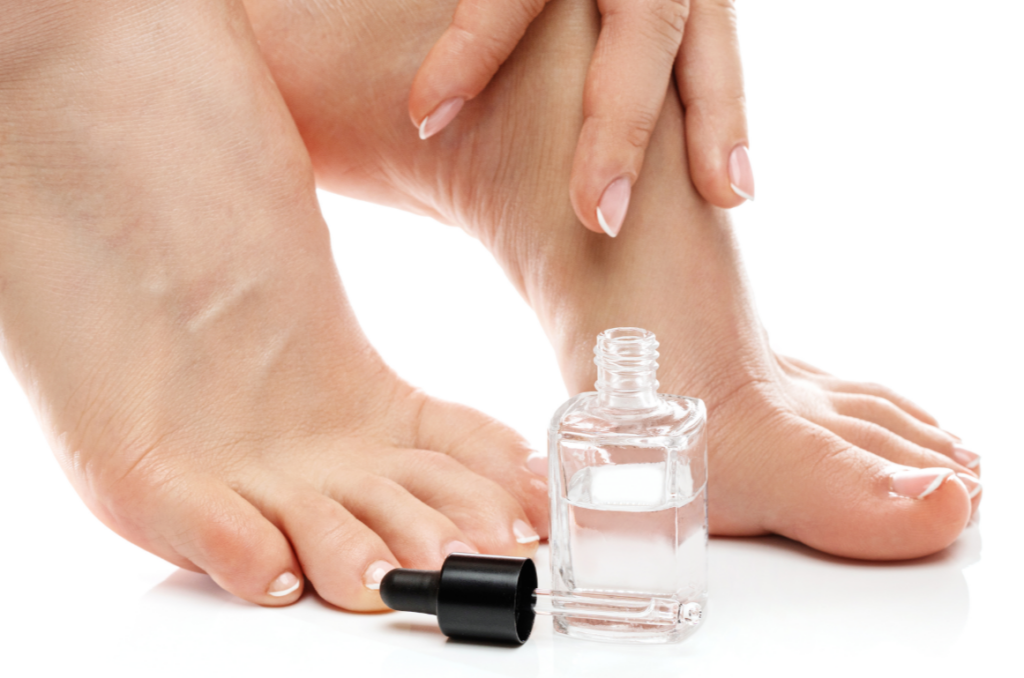White Vinegar for Toenail Fungus: Does It Really Work?
Contents
- 1 What is Toenail Fungus and Why Is It So Stubborn?
- 2 Why White Vinegar?
- 3 How to Use White Vinegar for Toenail Fungus?
- 4 Benefits of Using White Vinegar for Toenail Fungus
- 5 Potential Drawbacks of White Vinegar
- 6 What Does Science Say About White Vinegar for Toenail Fungus?
- 7 Tips to Prevent Toenail Fungus

Toenail fungus, scientifically known as onychomycosis, is more than just a cosmetic concern—it can cause discomfort, discoloration, and thickened nails that are challenging to manage. While many over-the-counter treatments and prescription medications exist, some people are turning to natural remedies like white vinegar for relief.
But does this pantry staple hold the key to healthier nails? Let’s dive deep into the science and practicality behind using white vinegar for toenail fungus.
What is Toenail Fungus and Why Is It So Stubborn?
Toenail fungus is caused by a type of fungus called dermatophytes. These organisms thrive in warm, moist environments like sweaty shoes and public locker rooms. Once they infect your toenails, they can lead to symptoms like
- Yellow or brown discoloration
- Brittle or crumbling nails
- Thickened nail beds
- A foul odor in severe cases
The stubborn nature of toenail fungus stems from its ability to hide beneath the nail, making it hard for topical treatments to penetrate. This is where white vinegar comes into the picture.
Why White Vinegar?
White vinegar, also known as acetic acid, is a household staple famous for its antimicrobial and antifungal properties. While its use for cleaning and cooking is well-known, it’s also touted as a natural remedy for certain skin and nail conditions. Here’s why white vinegar might work for toenail fungus
Acidic Environment
Fungus struggles to survive in acidic environments. White vinegar can alter the pH levels around your nails, making it inhospitable for fungal growth.
Antifungal Properties
Studies suggest that acetic acid has mild antifungal effects, which can help slow down the spread of the fungus.
Soothing Effect
Vinegar soaks can soften the affected nails and surrounding skin, reducing discomfort and making it easier to trim thickened nails.
How to Use White Vinegar for Toenail Fungus?
Before jumping into any home remedy, it’s important to approach it with the right method. Here are some of the best ways to use white vinegar safely and effectively
1. The White Vinegar Foot Soak
This is the most popular method and is easy to do at home.
What You’ll Need
- 1 cup of white vinegar
- 2 cups of warm water
- A basin or tub
Instructions
- Mix the white vinegar and warm water in a basin.
- Soak your feet for 15–20 minutes daily.
- Pat your feet dry thoroughly after soaking, as moisture can promote fungal growth.
Pro Tip: If the solution feels too harsh, dilute the vinegar with more water or alternate days to prevent skin irritation.
2. White Vinegar and Baking Soda Paste
For a more targeted approach, you can create a paste to apply directly to the affected toenail.
What You’ll Need
- 1 tablespoon of white vinegar
- 1 tablespoon of baking soda
Instructions
- Mix the vinegar and baking soda into a thick paste.
- Apply it to the infected nail and let it sit for 10–15 minutes.
- Rinse thoroughly and dry the area.
This method combines vinegar’s antifungal properties with baking soda’s ability to neutralize odors and exfoliate dead skin.
3. Direct White Vinegar Application
If you don’t have time for a soak, applying white vinegar directly to the nail might be a quick alternative.
What You’ll Need
- A cotton ball
- White vinegar
- Adhesive tape
Instructions
- Soak a cotton ball in white vinegar.
- Place it on the infected nail and secure it with adhesive tape.
- Leave it on for 20–30 minutes, then remove and dry your nail.
Benefits of Using White Vinegar for Toenail Fungus
White vinegar’s appeal lies in its affordability and natural properties. Here are some notable benefits
- Cost-effective: A bottle of white vinegar is far cheaper than most antifungal creams or prescriptions.
- Readily available: It’s easy to find in any grocery store, making it accessible for everyone.
- Gentle on skin: Unlike some harsh chemical treatments, diluted vinegar is generally safe for skin (although sensitive skin types should proceed with caution).
Potential Drawbacks of White Vinegar
While white vinegar can be a helpful home remedy, it’s not a miracle cure. Here are a few limitations to keep in mind
- Time-consuming: Results are not instant; consistent use over several weeks is necessary.
What Does Science Say About White Vinegar for Toenail Fungus?
Scientific research on white vinegar’s effectiveness against toenail fungus is limited, but the existing studies are promising.
A 2015 study on acetic acid’s antifungal properties found that it could inhibit fungal growth in lab settings. However, more clinical trials are needed to confirm its effectiveness for toenail fungus specifically.
That said, anecdotal evidence and centuries of traditional use suggest that white vinegar may be a viable natural remedy when used consistently.
Tips to Prevent Toenail Fungus
Whether you’re using white vinegar or another treatment, prevention is key to long-term success. Here’s how you can minimize the risk of toenail fungus
- Keep your feet dry: Fungus thrives in moisture, so always dry your feet thoroughly after showers or swimming.
- Wear breathable shoes: Choose footwear made of breathable materials to prevent sweat buildup.
- Change socks regularly: Avoid wearing the same socks two days in a row, especially after exercise.
- Use antifungal sprays or powders: These can help keep your shoes and feet fungus-free.
- Trim nails properly: Keep your toenails short and straight to prevent dirt or fungus from getting trapped.
While white vinegar isn’t a guaranteed cure for toenail fungus, it’s a natural, affordable, and easily accessible option worth trying especially for mild infections.
Its antifungal properties and ability to create an acidic environment can help curb fungal growth when used consistently.
However, patience is key with this remedy, as visible improvements may take weeks. For more severe cases or if you don’t see progress, don’t hesitate to seek professional medical advice.
Have you tried white vinegar for toenail fungus? Share your experience in the comments belowwe’d love to hear what worked (or didn’t work) for you!



